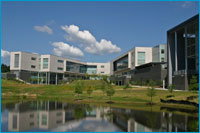
In a majority of US States, gay couples are able to get married, but then may get fired from work the very next day.
UPDATE JULY 17: Check out this link to read about and support the newly proposed Equality Act coming before the US Congress.
June 26, 2015 was indeed a very exciting and historic day for the LGBT community and our supporters as the United States Supreme Court ruled that same gender marriage is now a basic right for all Americans across all 50 states. This ends the past confusing patchwork of some states offering same gender marriage, others offering domestic partnership arrangements, while still others invaliding all forms of gay unions and relationships.
Just as this decision was being announced, I was in the middle of presenting “LGBT Diversity in the Workplace and Marketplace” at the Georgia Diversity Council’s half day “LGBT & Allies Diversity Summit” being held on the campus of my Alma Mater Georgia Tech in Atlanta, Georgia. Someone monitoring the Supreme Court announcements on their smart phone in the back of the room interrupted to break this momentous news, and the room exploded into cheering and applause.
After the session, I did a brief interview with one of the session’s later panelists, Mariela Romero, the Community Empowerment Director for Univision Communications, which offers Spanish-speaking televisions coverage including its channel in Atlanta. Mariela asked me to comment on the significance of this announcement as well as looking forward to what is next.
THE SIGNIFICANCE: This is absolutely huge, finally granting a universal right and one of the most basic human institutions and arrangements, marriage, to all Americans. I commented that with the mobility of the USA population frequently moving between states, it was critical to finally make same-gender marriage a common practice everywhere in our country. Same gender couples relocating between states that recognize or invalidate their marriages caused a huge amount of consternation and confusion. Something as basic as marriage equality and availability certainly needs to nationwide.
WHAT IS NEXT: Since I was there in Atlanta to present LGBT diversity within a business and organization framework, I did need to focus on the sad reality that, across a majority of US states, a gay person could get married one day and get fired from their job the very next. Employment nondiscrimination protection based on sexual orientation and gender identity is not law at the federal level as is employment protection based on gender, race, religion, etc. In most states, you can be the very best employee meeting and exceeding the requirements of your job, and your boss can fire you simply out of personal dislike for LGBT people.
ENDA (Employment Non-Discrimination Act) has been languishing in the US Congress for well over a decade, so like marriage in the past, a patchwork of employment protections is available only in some states (see map at bottom of blog.) Thankfully a vast majority of Fortune 1000 firms voluntarily include these protections in their own corporate non-discrimination policies (link to the Human Rights Campaign listing), and President Obama issued an executive order effective April 2015 requiring such protection for companies and their subcontractors with federal contracts. (link to my blog and federal site with the info.)
So let’s celebrate as many of our LGBT friends young and old get married, and let’s also be tireless advocates for also now providing universal employment protection across the entire United States!


